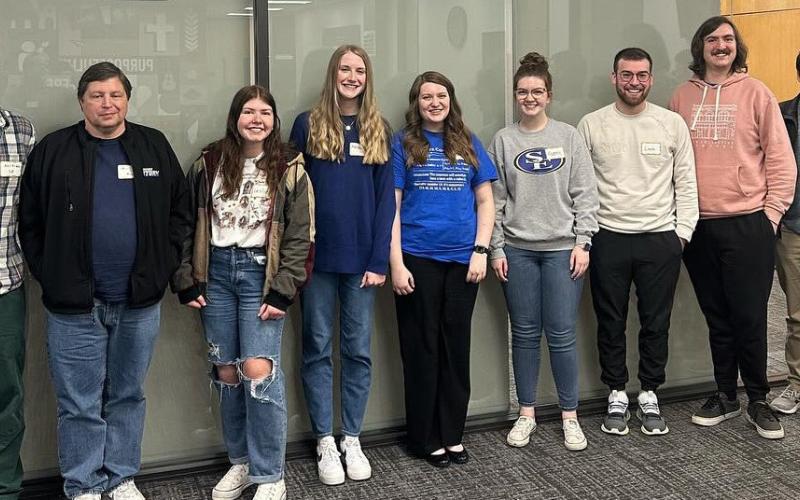In the scientific world, a torus is a name given to an object that is shaped like a donut. In this case, TORUS is an acronym for Texas Oklahoma Regional Undergraduate Symposium (for math students). It has taken place at Southeastern and other universities around the region and 2024 marks its 20th year. Seven SE math and computer science students attended TORUS 2024 at Southern Nazarene University in Oklahoma City, accompanied by their professors and advisors.
Two years ago SE created a new High Performance Computing (HPC) center that was built around a supercomputer acquired by a grant received by math professor Dr. Karl Frinkle. He and retired CS faculty member Mike Morris currently teach courses in HPC and are investigating an unsolved math problem known as the Collatz Conjecture. At this conference, HPC students Madison Gordon and John Eskue presented a talk explaining progress they have made in seeking a solution for this problem.
The students’ talk was highly received as they discussed a variety of programming techniques that contributed to the successes they have accomplished. The problem remains unsolved but much has been learned about techniques to further pursue a solution. The group is currently working on a scientific paper concerning the Collatz Conjecture that they plan to publish and present in the fall of this year.
Other activities at TORUS included an OSU professor who demonstrated very interesting devices that came from a 3-D printer. An example was a set of dice with 120 faces, instead of the usual 6. Also, a U. of Tulsa mathematician demonstrated some recent advances and challenges in matrix theory.
On a lighter note, an hour of entertainment was offered to participants that was a Jeopardy-like game with category headings such as “Calculus Pioneers”, “Amazing Algebra” and “Arithmetic Tricks.” SE students plan to also attend TORUS 2025 which will be held at Tarleton State University in Stephenville, Texas.

